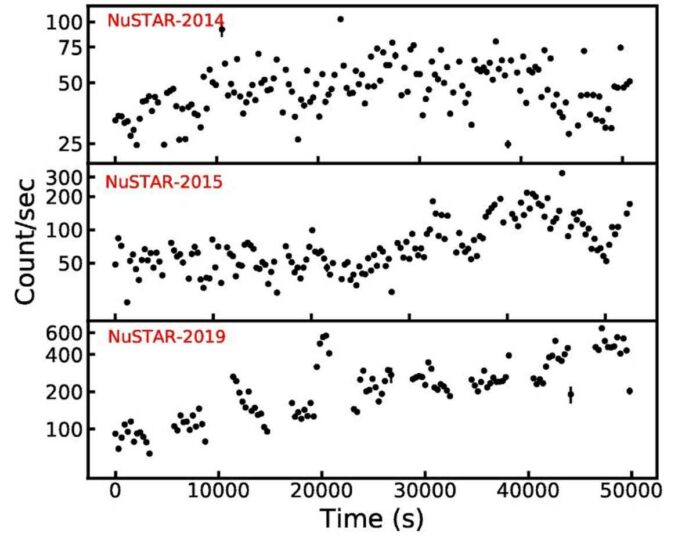Astronomers from Argentina and France investigated the evolutionary history of GX 301-2. It is an eccentric high-mass X-ray binary. The study’s findings were published on the arXiv pre-print repository on December 22nd. The study provides important insights into the origin of this object. It may help scientists better understand the evolution of X-ray binaries in general.
A normal star or a white dwarf transfers mass to a compact neutron star or a black hole in X-ray binaries. Astronomers classify them as low-mass X-ray binaries (LMXBs) or high-mass X-ray binaries (HMXBs) based on the mass of the companion star (HMXBs).
GX 301-2 is located 10,000 light years from Earth. It is an XRB discovered in 1973 that consists of a compact object and an optical star known as Wray 977. Wray 977 was discovered to be a hypergiant star with a mass greater than 31 solar masses. It made GX 301-2 an HMXB.
The GX 301-2 exhibits X-ray pulsations with a period of 11.6 minutes and rapid spin-up episodes. It is one of the most eccentric HMXB systems known to date. It has an orbital period of approximately 41.5 days. GX 301-2 appears to be a one-of-a-kind object with unique properties that distinguish it from every other known XRB.
A team of astronomers led by Adolfo Simaz Bunzel of the Argentine Institute of Radio Astronomy in Buenos Aires, Argentina, investigated the unusual properties of GX 301-2. They focused primarily on the system’s origin and evolution history. They used the detailed stellar-evolution code MESA for this purpose.
In a highly accretion-efficient scenario, the GX 301-2 system requires the neutron star’s progenitor to have transferred the majority of its envelope to the companion (Wray 977). The astronomers estimate that the progenitor had a mass of 23-30 solar masses and that the system’s initial mass ratio was 0.8-0.9. They also stated that higher initial masses would almost certainly result in the formation of a black hole.
The discovery of the mass of progenitor stars implies that the initial orbital period was less than five days. Above this limit, the accretion is insufficient to raise the companion’s mass to within the range derived for Wray 977. An initial orbital period of less than two days is discouraged because the star will fail to reach the core-collapse stage.
The researchers also looked into the strength of the neutron star’s natal kick in GX 301-2. It is assumed that neutron stars are given a significant velocity boost at birth, possibly reaching 1,500 km/s. According to the study, the natal kick strength of the investigated system was most likely around 450 km/s.

